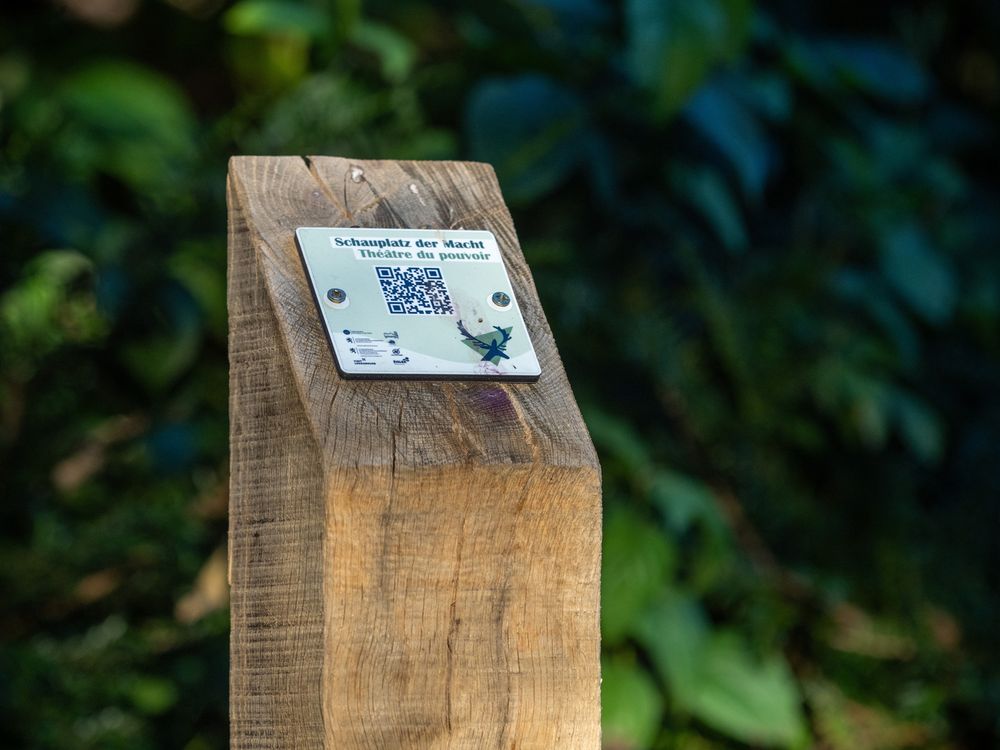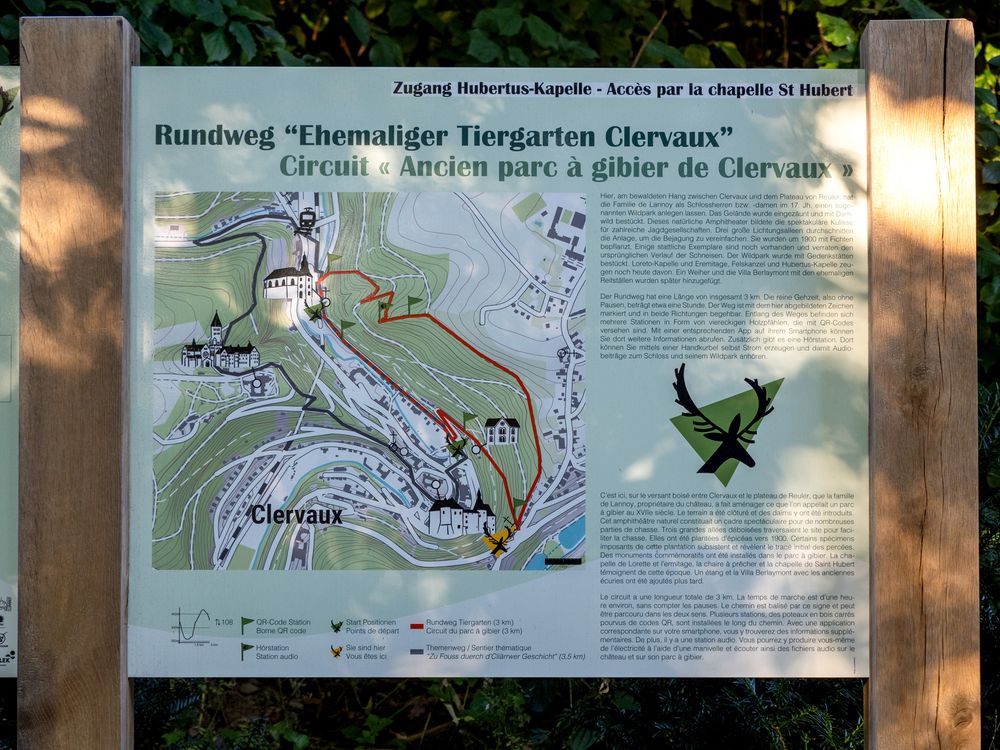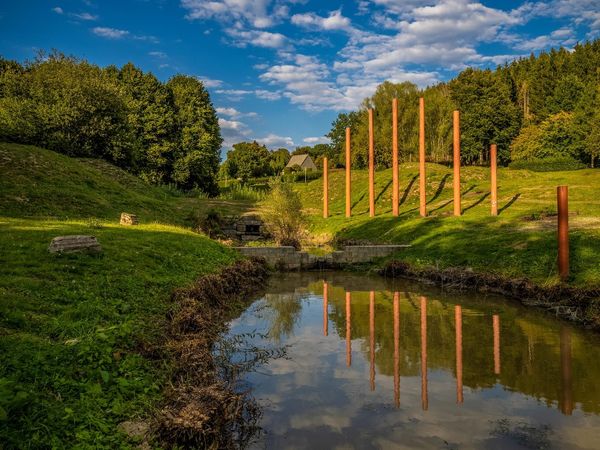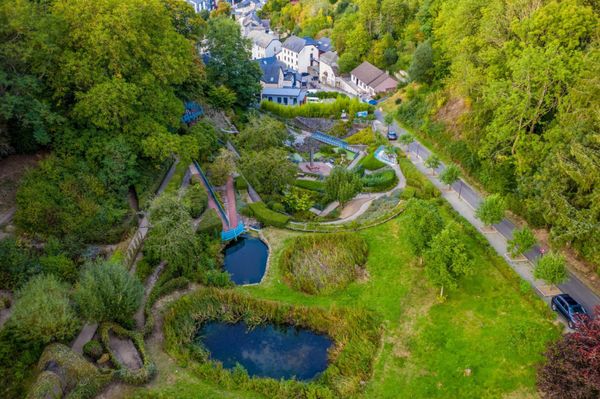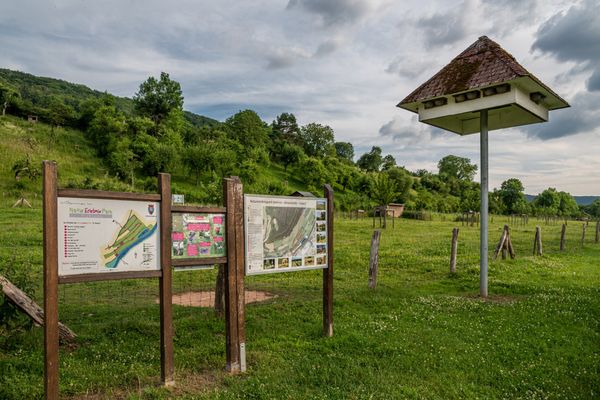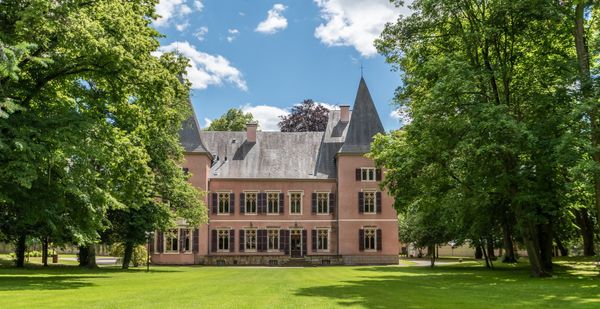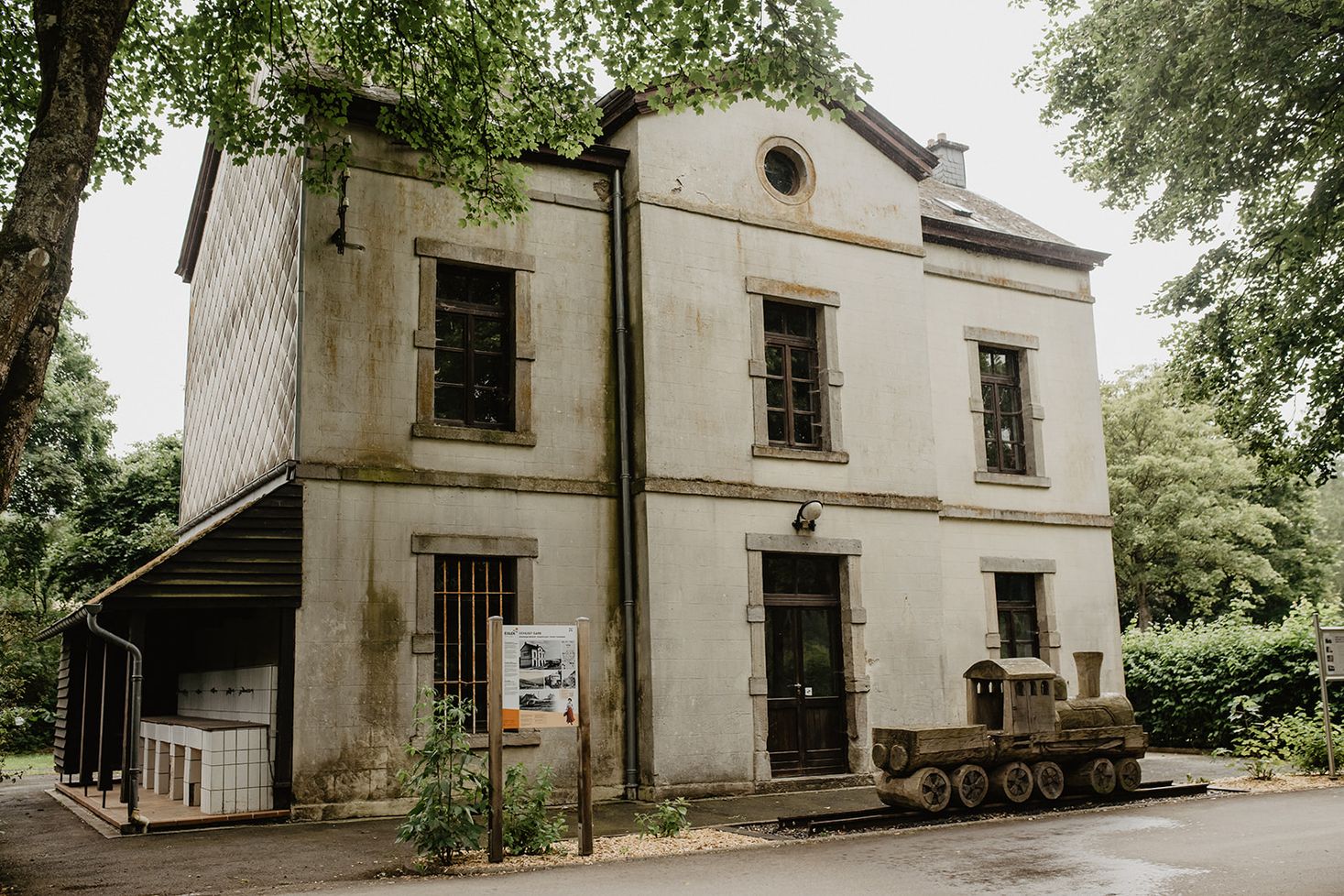

© Visit Éislek
The former deer park of Clervaux
The history of the Clervaux game park dates back to the 17th century and has close links with the local nobility. Today, a hiking trail leads visitors through this historic site and provides details about the hunting culture and rich traditions of the region.
The roots of the Clervaux deer park date back to the 17th century and are closely linked to the history of the Counts of Lannoy. Originally created in the context of medieval game parks, it first appeared on the topographical maps of Count Joseph de Ferraris in 1771-1778.
The approximately 20-hectare site was a hunting ground integrated into the feudal castle of Clervaux, whose origins date back to the 12th century. The Counts of Lannoy, who were involved in the political and religious affairs of the Brussels court, left their mark on this place. The Loretto Chapel, built in the 17th century and remodelled in 1762, bears witness to their religious commitment.
At that time, the boundaries of the park were marked out by characteristic linear openings that organised the site geometrically. It included wooded areas, clearings and areas suitable for hunting, reflecting the typical characteristics of the game parks of the time.
After revolutionary unrest in 1798, the park was extensively remodelled. At the end of the 19th century, Adrien-Florent de Berlaymont took over the estate and carried out extensive works that marked the transition to a new era for the park. The characteristic linear openings were filled in and the deer park was remodelled to create horse stables and a villa in the eclectic style of the time. These changes marked a transformation of the park towards a more diverse function that went beyond its original hunting purpose. These developments have helped to shape the park's current character.
A unique episode links the Clervaux game park with the history of Fontainebleau. Around 1800, a herd of fallow deer populated the park, and a local anecdote suggests that some of these deer were presented to Napoleon as a gift. According to tradition, the fallow deer were brought to Fontainebleau to repopulate the park, which had been devastated by the revolutionary unrest. They are said to have been accompanied by goats to ensure that the young animals could be fed during the journey. This anecdote bears witness to the exchanges between the owners of the park and the imperial circles of the time.
In the 20th century, the Berlaymont family abandoned the castle in 1927/28 and let it fall into decay.
Today, the Clervaux game park is still a historical site despite its remodelling. A walking trail of around 3 kilometres, which passes important sites, offers visitors a journey into the past. QR code terminals and audio stations line the path and share anecdotes as well as information about the hunting culture and the rich history of the region. This trail, designed to shed light on the game park's past, offers an immersive experience for anyone interested in history and nature.
Opening hours

